Trip Logs
Kimberley Cruise: Australia’s Last Frontier Trip Log: June 20–July 2, 2019

June 20–22, 2019 | Broome, Australia
We all converged on the faraway outpost of Broome from the distant reaches of the planet for the same reason: to experience the culture, wildlife and landscapes of Australia’s Kimberley on an epic luxury cruise. A roadless coastline of red sandstone, waterfalls and mangrove swamps, the Kimberley region is one of the most remote parts of Australia and home to some of the most extreme tidal variation on Earth.
Some of us arrived a few days early to enjoy the city and the incredible 14-mile-long stretch of sand known as Cable Beach. When the tide receded, a huge area of beach was revealed, along with some outcrops that provided ample opportunities for tidepooling. Crabs, brittle stars and even an octopus were a few of the low-tide residents we encountered there.
The hotel grounds were gorgeous and offered relaxing spaces to help remedy our jet lag. Several species of ibis roamed the grassy lawns during the day and were replaced by wallabies once the sun went down. Some of us left for a party at a nearby resort to witness a natural phenomenon known as Staircase to the Moon. A bewitching optical illusion unique to Roebuck Bay, it occurs when the full moon rises over the exposed tidal flats. The party was accompanied by didgeridoo music as the full moon began to rise, which sent chills down our spines.
On Friday evening, we met the A&K Expedition Team at a welcome cocktail party overlooking the sea. Beneath a fiery orange sky, we sipped ginger beer from a local brewery and celebrated the adventure we were about to embark upon together.
The following day, after breakfast, a handful of us headed to Broome Bird Observatory for an introduction to the birds in this region. The shorelines around the city are of international importance for the millions of waders and shorebirds that use it seasonally when migrating from their breeding grounds in the Arctic. We sipped tea as we observed double-barred finches making the most of the birdbaths near the main buildings. Then, we walked out to an overlook, where Caspian terns loafed on a sandbar and reef egrets foraged along the rocky shoreline.
Others stopped at Broome Japanese Cemetery, which pays tribute to the Japanese migrant workers who lost their lives during the town’s pearling industry boom in the early 20th century. Retrieving pearls was extremely dangerous; many Japanese divers drowned or were killed by decompression sickness, and many others became lost at sea during fierce cyclones and other storms. We also visited an exhibition and learned how the world-famous Australian South Sea pearl is harvested.
Some of us spent time with lecturer Bart Pigram, who provided firsthand insight into the landscape of northwestern Australia and the local Yawuru people’s place within it. He introduced us to the language and cultural heritage of the area and really set the stage for our understanding of Aboriginal heritage.
Late in the afternoon, we arrived at the dock and were greeted aboard ‘Le Laperouse’ by the ship’s crew. We settled in and gathered in the theater for a safety briefing. Cruise Director Paul Carter gave us an overview of the ship, and the members of the A&K Expedition Team told stories about themselves and their passion for this fascinating part of the world.
Following a relaxing dinner on our new home away from home, some of us gathered in the main lounge for a cocktail while others headed off to bed for a good night’s sleep.

June 23, 2019 | Lacepede Islands
The sky brightened to an intense orange at sunrise, and we took it all in with a cup of fresh coffee in hand. We enjoyed a hearty breakfast and gathered in the theater with lecturer Phil Schubert, a lifelong Kimberley explorer and photographer. During his informative presentation, Phil told stories from his time as a pilot flying throughout the area on his expeditions to many seldom-visited locales. We took a deeper look at the geology, history and culture of rugged and timeless Australia.
Afterward, we joined Expedition Leader Brad Climpson for a briefing on tomorrow’s activities, along with Expedition Director Suzana Machado D’Oliveira for a Zodiac briefing. As we ate lunch, the boats were fueled and lowered into the water. Lathered up with sunscreen and donning sun hats to protect our eyes, we boarded the Zodiacs and set out to explore a low-lying cluster of islands called the Lacepedes.
Flock after flock of brown boobies could be seen at this weathered coralline atoll. These large birds feed on fish and squid by diving into the water from above. They were curious about our group and could be seen soaring right above our heads, their eyes tracking our every move.
The outer beaches were mostly covered with tracks left by nesting female green turtles. In fact, this area is the most important green turtle nesting site in all of Western Australia. Interestingly, these turtles crawl up the beach to lay their leathery eggs in pits they dig in the sand.
We pulled into a protected lagoon, where crabs grazed on algae on the exposed rock. Ruddy turnstones picked through cracks and crevices in search of small invertebrates such as worms and crustaceans. Green turtles could be spotted all around us, scraping off rocky substrates like the crabs and popping up for air right next to our Zodiac. Shovelnose rays plied the shallows, combing through the sand for tasty morsels. Brown boobies lazed along the rocky shoreline and tended to their enormous downy chicks in the grass above.
Everyone watched in awe as frigatebirds soared overhead, barely moving their wings at all. These huge birds actually weigh very little, and their bones make up only five percent of their body weight. Consisting mostly of feathers, frigatebirds dip their long hooked bills in the water to snag fish, and even steal from other birds by harassing them until they drop or regurgitate their catch.
The Lacepede Islands seemed magical, and we felt fortunate to have had the opportunity to visit this remote and wild slice of the Kimberley. Back on board, we watched a spectacular sunset before gathering in the Panorama Lounge for Captain David Marionneau-Châtel’s Welcome Aboard Cocktail Party. During the party, we mingled over Champagne and were introduced to some of the ship’s officers. Afterward, we savored a festive dinner and nightcap at the bar.

June 24, 2019 | Talbot Bay, Horizontal Falls & Cyclone Creek
In the early morning, the Captain maneuvered ‘Le Laperouse’ through the narrows and into Talbot Bay. It was our first day in the Kimberley proper, and we found ourselves amid striking orange sandstone bluffs that had begun to illuminate at first light.
After breakfast, we departed for Horizontal Falls. These falls are actually a fast-moving tidal flow through two narrow, closely aligned gorges within the McLarty Range. The direction of the flow reverses with each change of the tide, and because tides in the Kimberley can reach nearly thirty-three feet, this creates a significant difference in the sea level on either side of the gorge, which in turn forces gushing water through the gap.
Our group boarded boats with incredibly powerful engines. It was an exhilarating ride, similar to riding river rapids. The boat made numerous passes through each gap, whisking in both directions. One of the highlights was looking through the second gap and seeing that the water level behind the gap was almost five feet higher on the other side.
Next, we explored Cyclone Creek with its stunning gorge, where we caught glimpses of white-quilled rock pigeons flying from one rocky ledge to another. Once through the gorge, the river opened up and moved much slower. Low, muddy areas were home to scrubby mangrove trees. Crabs scurried about, and sacred kingfishers — perched above them — surveyed the area for a crunchy meal. A few of us spotted crocodiles, including one that caught a huge mud crab right before our eyes and pulverized it with its powerful jaws.
Surprisingly, the highlight of our time here was the geology. Magnificent sandstone bluffs had been contorted by tectonic forces, resulting in tilting and bending of the rock layers. There were long ridges, outcroppings with zigzagging layers and even flutelike spires perched precariously over the sea.
After sharing stories back on board over lunch, we set out once more for Horizontal Falls. This time, the tide flowed in the opposite direction. We explored the coastline, searching for juvenile needlefish hiding among the mangrove roots and white-bellied sea eagles perched in tall trees, which kept an eye out for unsuspecting fish below.
Returning to ‘Le Laperouse,’ we mingled over afternoon tea before joining lecturer Jason Hicks in the theater for “Gondwana: Breaking Plates to Form a Continent.”
Later, during our first evening recap, lecturer Rich Pagen talked about the seabirds we encountered in the Lacepede Islands. Following the presentation, Bart discussed the rafts locals used to travel through the area and Jason highlighted the region’s geology.
It was an incredible and diverse first day in the Kimberley, and we were just warming up.

June 25, 2019 | Montgomery Reef & Freshwater Cove
We sipped coffee in the early morning light as the A&K Expedition Team lowered the fleet of Zodiacs to prepare for our adventure in Montgomery Reef. Spanning 154 square miles, the reef is Australia’s largest inshore reef. The entire reef emerges from the water at low tide.
Next thing we knew, we were out cruising in our trusty rubber boats, wrapped by the sea in every direction. Suddenly, the reef began to materialize right beside us. At first, the water drained off slowly. Soon, powerful cascades started to form, dumping water off the top of the reef.
Once there was dry reef to stand on, wading birds arrived to feed on the riches of the exposed rock. Reef egrets searched for exposed prey, while flocks of terns hovered above the deeper water near the ridge in search of fish stunned by the massive outflow of water. Sea turtles popped up in the channel, surrounding us, and a massive Stokes’s sea snake could be spotted, stretching an impressive five feet from its head to its finlike tail tip.
We relaxed over a delicious lunch served on deck. Then, we reboarded the Zodiacs for a trip to Freshwater Cove. Our group was welcomed ashore by the traditional owners of the land, who painted ocher on our cheeks before leading us up to a rock art gallery in a cave well inland. As we hiked up to the site, we passed enormous termite mounds and flocks of feeding birds. With a number of flowering trees, honeyeaters of at least six species were in attendance, bickering among themselves and attempting to gain access to the flowers’ sticky nectar.
As we climbed higher, the terrain became rockier. We arrived at a high point beneath a shady overhang, which housed the rock art. Two Aboriginal brothers hosted our visit to the cave, telling us about themselves and their family. They also pointed out some of the Wandjina art painted on the cave ceiling — depicting strange and spellbinding images of cloud and rain spirit figures from Australian mythos.
The walk down to the beach rewarded us with spectacular views of the sea below. Back on the beach, we participated in a smoke ceremony intended to keep evil spirits away before wandering in search of animal tracks and signs of life washed up on the sand. It was a magical experience, and everyone was grateful to learn more about the rock art and what made it so significant.

June 26, 2019 | Hunter River & Mitchell Falls
We watched the sunrise from our anchorage just off the mouth of Hunter River. Brilliant turquoise water surrounded the ship in every direction, and the white-sand beaches of Naturalists Island lay just off the bow. After a leisurely breakfast, we prepared for another amazing day.
Some of us took a helicopter flight 37 miles inland from Naturalists Island to an impressive four-step waterfall called Mitchell Falls. The scenery along the way was incredible; from 600 feet up, it provided a beautiful new perspective of the Kimberley’s landscape. Extensive mangroves along Porosus Creek were cut by meandering channels, and as the tide dropped, more and more mud banks were exposed. At one point, on the Mitchell Plateau itself, the terrain became a woodland with sporadic outcroppings and bluffs.
After several passes just over the falls, the helicopter landed on a wide rock platform. We set out to explore the area on foot. Some of us hiked to an overlook above the falls, passing bushes with radiant pink flowers along the way. Whistling kites soared overhead as we took in the impressive scene. Other guests went for a dip in the rocky pools along the river. Spring fed, the water was brisk and just the right temperature for a hot, sunny day.
Back on board, we disembarked on Zodiacs, heading for Hunter River and its mangrove-lined tributaries. We stopped at the water’s edge, where dozens of fiddler crabs were busy sifting through the sediment for organic material. The males waved around their appendages in an attempt to attract a mate, their white claws standing out against the gray silt.
The stars of the mudflats were the mudskippers, a type of goby most active when the tide is out and the water is gone. At high tide, they hide safely in their burrows. Once the mudflats are exposed, the mudskippers become active and begin to feed. Watching them roam around and become embroiled in fleeting scuffles with their neighbors was entertaining.
Once the tide was high enough and had flooded the forest, we headed into some of the narrow channels and meandered among the trees. Saltwater crocodiles — called “salties” by some of the locals — dozed soundly along the muddy banks. These formidable ambush predators are the largest living reptiles; the males can reach over twenty feet in length and weigh more than 4,000 pounds.
Returning to the ship, we joined Brad for a briefing regarding tomorrow’s activities before heading out to the pool deck for a sunset cocktail party. The stunning setting in Doubtful Bay was complemented by music, canapés and a casual atmosphere.
It was a perfect end to our day in the heart of the Kimberley.

June 27, 2019 | Bigge Island & Sterna Island
After watching the sunrise with a cup of piping-hot coffee in hand, we relaxed over breakfast. Once we had finished eating, we zipped ashore by Zodiac to a small beach on Bigge Island. Above the high tide, we found numerous body pits left by nesting sea turtles. Many were ringed with the tracks of northern quolls, nocturnal marsupial carnivores that would like nothing more than to snack on newly hatched sea turtles.
Combing the beach was a lot of fun. Our finds ranged from dried-up sea stars to sponges and giant clamshells. From the beach, we climbed the King Leopold Sandstone amid huge boulders set in place by a tsunami that impacted the area long ago. We arrived at a narrow bay that stretched well inland behind us, with a natural lookout point over the surrounding ridges. Two carefully positioned lines of stones in a flat area could be found; this indicated that the area was important to the Aboriginal people. To them, it was either a meeting place or ceremonial site.
We spent several moments in awe of the stones. Then, we made our way down to the dry, mangrove-lined creek bed. From a call over the radio, we learned that three turtle hatchlings had just crawled out of their nest and were heading for the sea. Everyone looked on intently as these tiny creatures struggled downhill toward the surf; we wished them well on their journey. It was hard to imagine that the females among them would not return to this beach for several decades, and that the males would never come back.
Next, we explored the overhangs and caves along the beach, admiring the numerous Wandjina rock art paintings found there. Brad and Bart interpreted the site, allowing us to understand and appreciate its cultural significance.
Back on board ‘Le Laperouse,’ we joined Rich in the theater as he discussed the tropical marine ecological fringe. Over lunch, the Captain repositioned to the Montesquieu Islands, where we set off for a Zodiac cruise of the area.
A young crocodile was spotted on a sandy beach on Sterna Island, far from the mainland where it was hatched. Red-capped plovers ran along the shoreline just up from the waves, keeping a careful eye out for invertebrates that would make a tasty meal. There was also a tense interaction between a white-bellied sea eagle and a peregrine falcon right over our heads.
We admired the columnar basalt along the shore of Oliver Island. Soon, we landed on Gabriel Island and fanned out to explore its vast beaches and sloping central plateau. A massive osprey nest was perched on a high bluff above us, and flocks of yellow white-eyes foraged in the low bushes just up from the beach. Every shape and size of coral rubble was present on the beach, including the bright-red remains of organ pipe coral, a soft coral that secretes the hard, latticed skeleton we encountered in abundance around the island.
Later, we gathered for a recap and briefing, which was followed by a sumptuous dinner. Some ventured out on deck to admire the dazzling night sky. Far from the light pollution of human population centers, the Kimberley proved to be a fantastic place to stargaze.

June 28, 2019 | Jar Island & Anjo Peninsula
A brilliant orange horizon greeted us in the morning as we strolled out on the back deck in preparation for our short Zodiac ride ashore to Jar Island. We landed in a secluded cove with white sand and rocky sandstone bluffs surrounding it. From there, our group set off to explore and look for Gwion Gwion Aboriginal rock art, which was strikingly different from the Wandjina art we had seen previously on the trip.
Also known as Bradshaw rock art, it is named for Joseph Bradshaw, a pastoralist who stumbled upon it in 1891 while searching for suitable grazing land in the area. This style of art consists mostly of human forms — thin and elongated, with varying numbers of fingers and toes. Dangling from some of these forms were tassels, whereas others resembled laundry clothespins in shape and design.
We hiked back behind the beach a short distance to visit three different rock art galleries, each of which was located in a quiet, sheltered spot in and among the jumble of weathered sandstone. The more we looked, the more we saw. One painting portrayed a boomerang, another an echidna, one of the few egg-laying mammals. Most of our understanding of the age of these paintings comes from carbon dating mud wasp nests on the rock face. Today, we know that some of this art is at least 17,000 years old.
Returning to the ship, we gathered for lunch on deck beneath a canopy of blue clouds, with almost no wind. Leaning over the railing, we found ourselves surveying the water for dolphins and other wildlife as the Captain took ‘Le Laperouse’ to our afternoon anchorage just off the Anjo Peninsula.
Our group landed below sand dunes on a remote beach and embarked on a hike inland. From there, we made our way to the site of a DC-3 aircraft that crash-landed here in February 1942. The plane was in remarkably good condition, and the scene was a powerful reminder that this northern part of Australia was involved in World War II.
Leaving the wreckage behind, we wandered across trails left by wild cattle, whose tracks and scat were readily apparent. Red-winged parrots circled overhead, the green and red plumage illuminated brilliantly by the sun. We also passed termite mounds dotting the open areas between the trees, and watched an osprey hunting fish over the shallows.
Some of us took advantage of the low tide, exploring the exposed rocky shoreline for animal life. We fanned out among the rocky tide pools, discovering everything from black sea cucumbers hiding along the rock edges to tiny ghost shrimp.
Afterward, we returned to the ship and cleaned up before meeting for cocktails in the theater. This was followed by a recap and briefing. Many went to bed early to rest up for the early start tomorrow.

June 29, 2019 | King George River & Falls
This morning, ‘Le Laperouse’ arrived at the mouth of the King George River. Over the course of thousands of years, the river has cut a steep gorge through beautiful orange sandstone. Following breakfast, we boarded Zodiacs for one of several tours among this spectacular part of the Kimberley.
We motored rapidly up the gorge, disembarking near the base of King George Falls — a 300-foot drop into the canyon below, which was nearly waterless, owing to the light rainy season this year. After hiking the canyon rim, we were rewarded with a spectacular view on the way down.
Others explored the river system by Zodiac. The diversity of raptors in the area was remarkable, with huge wedge-tailed eagles soaring along the cliff face and Brahminy kites perched in the mangroves that lined some of the small side canyons. A few rock wallabies were spotted loafing the daylight hours away, waiting until things cooled down before venturing out to feed on grasses. We admired rainbow bee-eaters preening themselves in the morning light, and a few of us even came across a dugong sticking its nose up above the surface every few minutes for a breath.
At the falls, we admired the shaded box canyon from within, with rock erosion revealing the extent of flow that would be present during the rainy season. This time of year, it was a quiet and peaceful place. We pulled up to one of several small spring-fed seeps dripping down the canyon walls and watched small crabs graze on the algal growth. Some of us reached for water careening down the cliff — a cool and refreshing treat.
We returned to the ship for lunch. Later in the afternoon, many of us came ashore to a lovely white-sand beach near the mouth of the King George River. Some explored the rocks at the edge of the beach, where hermit crabs wandered about and the bones of a sea turtle could be found. Others made their way inland across a grassy swale. Trillers and honeyeaters flitted from bush to bush. Arriving at an overlook, we could see the spectacular exposed coastline on the opposite side of the ridge.
Back on ‘Le Laperouse,’ we grabbed a cup of tea and joined Bart in the theater for his talk “Indigenous Cultural Contrasts: Two Women, One Story.” After a festive recap and lovely dinner, some of us made our way to the top deck to stargaze while others ventured down to the Blue Eye Lounge for a glass of Champagne.

June 30, 2019 | Wyndham
With a cup of coffee in hand, we stepped on deck to watch as the ship made its way through Cambridge Gulf beneath a brightening sky, en route to the small port town of Wyndham. We experienced a dry landing for the first time since our journey began in Broome and enjoyed a leisurely breakfast. Afterward, we set off for a fantastic day trip through the region.
Some opted for a spectacular flyover of the Bungle Bungles, one of Western Australia’s geological wonders. As the plane rose over the Ord River, it banked to provide views of one of the most efficient dam systems in the world: the Ord River Irrigation Scheme. The rock and clay dam of Lake Argyle holds back enough water to cover tens of thousands of acres, and the hydroelectric plant provides energy for the towns of Kununurra and Wyndham, as well as the nearby Argyle Diamond Mine.
As we travelled farther inland, the cone karst topography of the Bungle Bungles became apparent. Millenniums of freeze-thawing have enlarged fractures in the rock, creating the spectacular beehive rock patterns we see today. We learned that the unusual orange and dark gray banding on the conical rock formations is caused by differences in the layers of sandstone. Layers of rock with darker bands hold more moisture and are home to dark algal or cyanobacterial growth.
The rest of us drove to the town of Kununurra. We boarded small boats for our exploration of Ord River Floodplain, a protected area containing freshwater mangrove forests, lagoons, creeks and the surrounding floodplain forest. Wildlife could be seen as soon as we hit the water. Archerfish and catfish fed right next to the boat, while four species of cormorants roosted on snags or fished in the open water. Australasian darters held their wings out to dry in the sun. Meanwhile, ospreys picked apart the fish they had recently plucked from the water.
In the narrow side creeks, we shifted into crocodile-spotting mode, scanning the shoreline for freshwater crocodiles (called “freshies” by the locals) — the smaller inland cousins of the massive saltwater crocodiles we had seen along the coast. Pelicans in trees, white-bellied sea eagles on nests and azure kingfishers darting across the waterways were just a handful of the day’s remarkable sightings. Lunch was served along the riverbank in a quiet, shady area, and a stop at the Durack Homestead Museum (also known as Argyle Downs) — originally built in 1895 — gave us a glimpse of what life was like on the early cattle stations.
Back on board ‘Le Laperouse,’ we donned our best Sunday attire in preparation for the Captain’s Farewell Cocktail Party. Our group shared stories from the day over drinks, and the Captain stepped up on stage to welcome us to the gala. Afterward, Paul introduced us to many of the ship’s crew, and soon, the stage was overflowing. It was wonderful to have the opportunity to see many of the incredible people who contributed so much to our cruise experience.
July 1, 2019 | At Sea & Darwin
We awoke to calm sea conditions, with the blue water of the open ocean visible in every direction. There were some huge cumulus clouds on the horizon. This came as quite a shock, as we had barely seen a cloud in almost two weeks. Some took advantage of our day at sea to sleep in longer, while others savored a quiet moment on deck to admire another gorgeous sunrise.
After breakfast, we joined photo coach Richard Harker in the theater for his presentation titled “Easy and Fun Tips for Better Smartphone Photographs.” This was followed by a briefing from Brad about our arrival in Darwin later today and a disembarkation briefing from Paul, during which we learned about our travel details for tomorrow morning, when we would disembark the ship. Next, we watched a trailer from the cruise DVD, produced by the vessel’s photo team. Some of us started packing, others napped, and the rest spent time on deck to watch our passage through the southern Timor Sea.
We relaxed over lunch before making our way to the theater for an overview of our cruise. Afterward, we watched a slide show consisting of photos taken by the A&K Expedition Team and compiled by naturalist Richard “Blackjack” Escanilla. The photos and video were amazing, and our experiences here seemed as if they had happened only yesterday — and a lifetime ago — in the same moment. As the ship edged closer to the pier in Darwin, it was startling to see so many people in one place after being in the wilderness for so long.
Several of us wandered into town to explore or grab a drink at one of the restaurants along the waterfront. After dinner, a spectacular fireworks display lit up the sky near the ship as part of Territory Day, a celebration of the anniversary of self-governing in Australia’s Northern Territory.
Our journey had come to an end. The final day of this expedition was dominated by reflection and celebration with the new friends we had made throughout this extraordinary and unforgettable adventure.
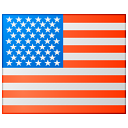 The Americas
The Americas Europe, Middle East and Africa
Europe, Middle East and Africa Australia, NZ and SE Asia
Australia, NZ and SE Asia














































































































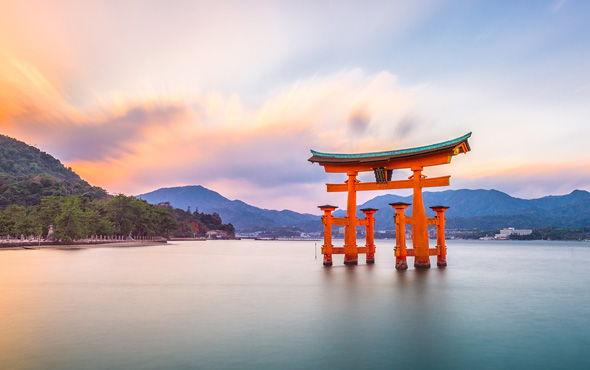
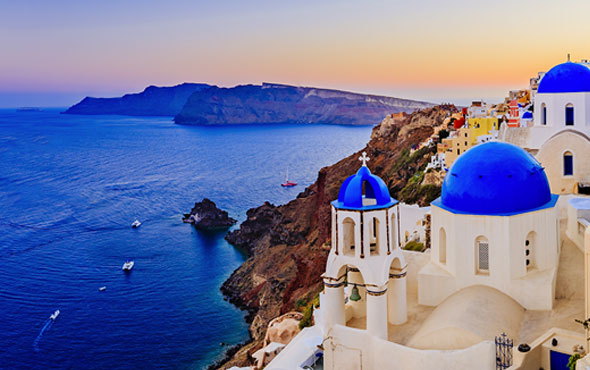
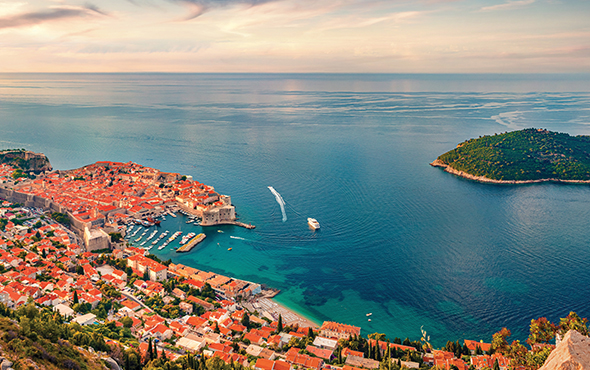
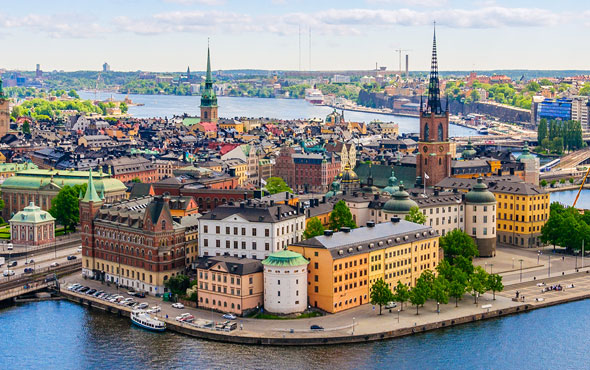





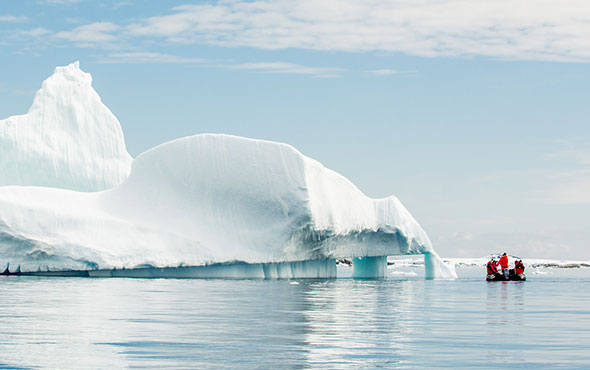




 The Americas
The Americas
 Europe, Middle East and Africa
Europe, Middle East and Africa Australia, NZ and SE Asia
Australia, NZ and SE Asia